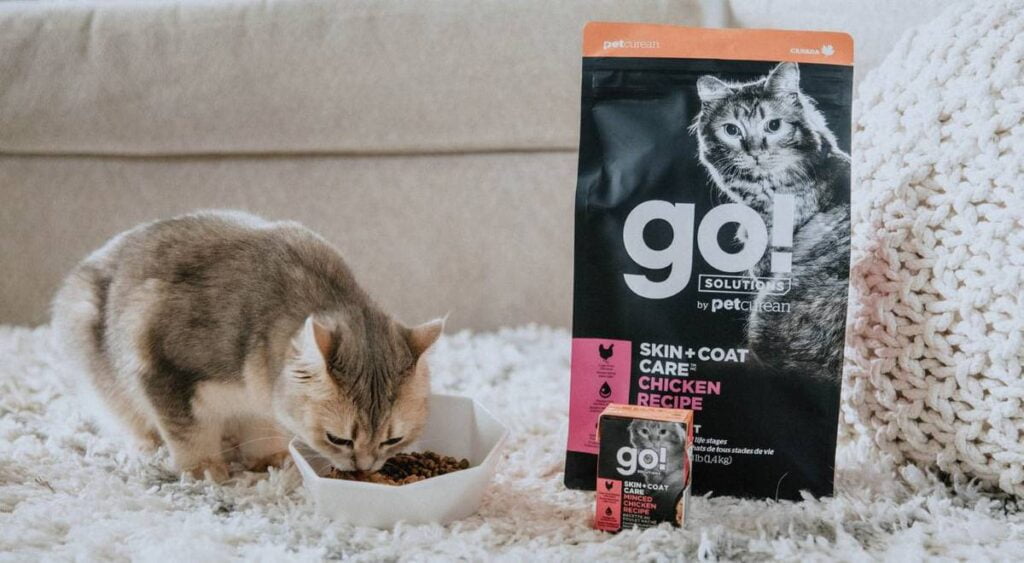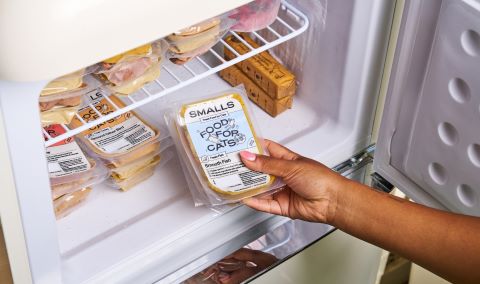How Long does Dry Cat Food last once Opened?

If you’re a cat owner, you know that providing your feline friend with the best nutrition is essential for their overall health and well-being. One of the most common choices for cat nutrition is dry cat food. It’s convenient, easy to store, and has a longer shelf life than wet cat food.
However, like any other pet food, dry cat food does have a limited shelf life. This raises the following question: How long does dry cat food last once opened?
In this blog post, we’ll explore the factors that influence the shelf life of opened dry cat food, how to store it properly, and signs to look for when determining if it’s still safe for your pet.
Factors Affecting the Shelf Life of Opened Dry Cat Food
Understanding the factors that influence the shelf life of opened dry cat food is crucial for providing your feline friend with the best nutrition. While dry cat food is known for its convenience and longer shelf life compared to wet food, several key elements come into play when determining how long it will remain fresh once opened.
- Packaging Quality: The type and quality of the packaging play a significant role in preserving the freshness of the cat food. Most dry cat food comes in resealable bags or containers designed to keep air and moisture out. A damaged or improperly sealed package can accelerate the food’s degradation.
- Ingredient Composition: The ingredients used in the cat food formulation can significantly impact its shelf life. High-quality cat food, made with natural preservatives and a balance of essential nutrients, is more likely to last longer than low-quality food with artificial additives.
- Storage Conditions: Proper storage conditions are paramount in extending the shelf life of opened dry cat food. Factors such as temperature, humidity, and exposure to light can all contribute to how long the food retains its freshness. For your pet’s safety and well-being, it’s essential to create an ideal storage environment.
- Humidity and Moisture Control: Moisture can lead to mold growth and spoilage. Keeping the storage area dry and free from humidity is essential to prevent such issues.
- Temperature Stability: Fluctuations in temperature can promote the growth of bacteria and reduce the food’s shelf life. Storing the cat food in a cool, stable environment is crucial for maintaining its quality.
- Exposure to Light: Prolonged exposure to light, particularly sunlight, can cause the degradation of the food’s nutritional content. Storing the food in a dark or opaque container helps protect it from the harmful effects of light.

How Long Does Dry Cat Food Last?
So how long does dry cat food last?
Unopened dry cat food typically boasts a shelf life ranging from 6 months to a year.
However, once you’ve unsealed the bag or container, the clock begins to tick, and the longevity of the food becomes a different story.
Once opened, dry cat food retains its freshness for approximately 4 to 6 weeks.
Nevertheless, it’s crucial to understand that this timeframe isn’t set in stone and can vary depending on a variety of factors, as discussed earlier in this post.
Signs of Spoiled Dry Cat Food
Recognizing the telltale signs of spoiled dry cat food is crucial to ensuring your beloved feline companion’s safety and health. Here, we delve deeper into these indicators of food spoilage, empowering you to make informed decisions about your cat’s nutrition.
- Unusual Odor: The olfactory senses play a significant role in assessing the quality of dry cat food. When opening the packaging, take a moment to inhale. Fresh cat food should have a neutral or slightly pleasant odor, often described as grainy or meaty, depending on the ingredients. If you detect a pungent, rancid, or otherwise off-putting smell, it’s a clear sign that the food has gone bad.
- Changes in Texture and Appearance: Visual inspections of the kibble are equally important. Quality dry cat food should maintain its original appearance, typically featuring uniform colors, shapes, and a dry, crisp texture. Any discoloration, unusual texture, or the presence of mold or foreign objects is a red flag. Discolored kibble might indicate spoilage due to exposure to moisture or oxygen. If the food has become mushy, sticky, or crumbly, it’s best not to feed it to your cat.
- Off Taste: While it might be challenging for us humans to taste our cat’s food, our feline friends are incredibly discerning when it comes to flavor. If the food no longer tastes as it should or has an unpleasant, bitter, or sour flavor, your cat will likely reject it. Cats are notorious for their picky eating habits and will instinctively avoid food that seems spoiled. Trust your cat’s instincts when they refuse to eat, as they have a keen sense of taste and can detect changes in their food long before you can.
- Pest Infestations: An often-overlooked sign of spoiled dry cat food is the presence of pests such as insects or rodents. If you notice any pests in or around the cat food container, it’s not safe for consumption. These critters can introduce harmful bacteria, parasites, or contaminants to the food, posing a risk to your cat’s health.
Did you know that you can mix both dry and wet cat food? Follow the link to learn more about the benefits of doing so.
Conclusion
In conclusion, the shelf life of opened dry cat food varies based on several factors, including packaging, ingredients, and storage conditions. By following proper storage guidelines and keeping an eye out for signs of spoilage, you can ensure that your cat’s dry food remains fresh and safe for consumption.


